It is at hurricane strength now, and we have Hurricane Warnings for the Cayman Islands and roughly the Western half of Cuba. A Tropical Storm Warning is in effect for the Florida Keys. It remains highly uncertain where this thing ends up, but the computer model guidance does consistently show it weakening back to a tropical storm after it gets into the Gulf of Mexico, or at least the Western Gulf, where there is just going to be a lot of wind shear that pumps dry air into it. It might barely survive to the coast of Louisiana, if that's where it's really going. There is still a spread in the model guidance. And it's too soon to know if we get enough of that tropical moisture to bring extra rain to Central or North Alabama.
000
WTNT63 KNHC 060021
TCUAT3
Hurricane Rafael Tropical Cyclone Update
NWS National Hurricane Center Miami FL AL182024
720 PM EST Tue Nov 05 2024
...RAFAEL INTENSIFIES INTO A HURRICANE...
Recent data from a NOAA Hurricane Hunter aircraft indicates that
Rafael has become a hurricane with maximum sustained winds of 75
mph (120 km/h) with higher gusts. Data from the aircraft also
indicates that the minimum central pressure has fallen to 986 mb
(29.11 inches).
SUMMARY OF 720 PM EST...0020 UTC...INFORMATION
---------------------------------------------------
LOCATION...19.4N 79.9W
ABOUT 20 MI...35 KM SE OF LITTLE CAYMAN
ABOUT 305 MI...495 KM SSE OF HAVANA CUBA
MAXIMUM SUSTAINED WINDS...75 MPH...120 KM/H
PRESENT MOVEMENT...NW OR 325 DEGREES AT 15 MPH...24 KM/H
MINIMUM CENTRAL PRESSURE...986 MB...29.11 INCHES
$$
Forecaster Papin/Hagen
000
WTNT33 KNHC 052355
TCPAT3
BULLETIN
Tropical Storm Rafael Intermediate Advisory Number 9A
NWS National Hurricane Center Miami FL AL182024
700 PM EST Tue Nov 05 2024
...RAFAEL NEAR HURRICANE INTENSITY AS IT APPROACHES THE CAYMAN
ISLANDS...
SUMMARY OF 700 PM EST...0000 UTC...INFORMATION
----------------------------------------------
LOCATION...19.3N 79.9W
ABOUT 25 MI...45 KM SE OF LITTLE CAYMAN
ABOUT 305 MI...495 KM SSE OF HAVANA CUBA
MAXIMUM SUSTAINED WINDS...70 MPH...110 KM/H
PRESENT MOVEMENT...NW OR 325 DEGREES AT 15 MPH...24 KM/H
MINIMUM CENTRAL PRESSURE...987 MB...29.15 INCHES
WATCHES AND WARNINGS
--------------------
CHANGES WITH THIS ADVISORY:
None.
SUMMARY OF WATCHES AND WARNINGS IN EFFECT:
A Hurricane Warning is in effect for...
* Cayman Islands
* Cuban provinces of Pinar del Rio, Artemisa, La Habana, Mayabeque,
Matanzas, and the Isle of Youth
A Tropical Storm Warning is in effect for...
* Cuban provinces of Villa Clara, Cienfuegos, Sancti Spiritus,
and Ciego de Avila
* Lower and Middle Florida Keys from Key West to west of the
Channel 5 Bridge
* Dry Tortugas
A Tropical Storm Watch is in effect for...
* Cuban provinces of Camaguey and Las Tunas
A Hurricane Warning means that hurricane conditions are expected
somewhere within the warning area. A warning is typically issued
36 hours before the anticipated first occurrence of
tropical-storm-force winds, conditions that make outside
preparations difficult or dangerous. Preparations to protect life
and property should be rushed to completion.
A Tropical Storm Warning means that tropical storm conditions are
expected somewhere within the warning area.
A Tropical Storm Watch means that tropical storm conditions are
possible within the watch area.
Interests elsewhere in Cuba, the Florida Keys, and the southern
Florida Peninsula should monitor the progress of Rafael.
For storm information specific to your area in the United
States, including possible inland watches and warnings, please
monitor products issued by your local National Weather Service
forecast office. For storm information specific to your area
outside of the United States, please monitor products issued by
your national meteorological service.
DISCUSSION AND OUTLOOK
----------------------
At 700 PM EST (0000 UTC), the center of Tropical Storm Rafael was
located by NOAA and Air Force Hurricane Hunter aircraft near
latitude 19.3 North, longitude 79.9 West. Rafael is moving toward
the northwest near 15 mph (24 km/h). A general northwestward motion
is anticipated over the next several days. On the forecast track,
the storm is expected to move near or over the Cayman Islands
tonight, be near or over western Cuba on Wednesday, and move into
the southeastern Gulf of Mexico by Wednesday night.
Reports from Air Force Reserve and NOAA Hurricane Hunter aircraft
indicate that maximum sustained winds remain near 70 mph (110 km/h)
with higher gusts. Steady to rapid intensification is expected
during the next 24 hour or so, and Rafael is expected to become a
hurricane shortly as it passes near the Cayman Islands, with
additional strengthening before it makes landfall in Cuba.
Tropical-storm-force winds extend outward up to 115 miles (185 km)
from the center.
The minimum central pressure estimated from dropsonde data from the
Hurricane Hunter aircraft is 987 mb (29.15 inches).
HAZARDS AFFECTING LAND
----------------------
Key messages for Tropical Storm Rafael can be found in the Tropical
Cyclone Discussion under AWIPS header MIATCDAT3 and WMO header
WTNT43 KNHC and on the web at hurricanes.gov/text/MIATCDAT3.shtml
WIND: Hurricane conditions are expected in the Cayman Islands by
this evening and are also expected in western Cuba and the Isle of
Youth on Wednesday. Tropical storm conditions are expected in parts
of west-central Cuba and the lower and middle Florida Keys on
Wednesday and Wednesday night. Tropical Storm conditions are
possible farther east in central Cuba on Wednesday.
RAINFALL: Heavy rainfall will impact areas of the western Caribbean
through early Thursday, particularly across Jamaica and the Cayman
Islands into southern and western portions of Cuba. Rainfall totals
between 3 to 6 inches are expected, with isolated higher totals up
to 10 inches anticipated across areas of higher terrain, which could
lead to areas of flash flooding and mudslides.
Rainfall totals of 1 to 3 inches are expected for the Lower and
Middle Florida Keys.
For a complete depiction of forecast rainfall associated with
Tropical Storm Rafael, please see the National Weather Service Storm
Total Rainfall Graphic, available at
www.nhc.noaa.gov/graphics_at3.shtml?rainqpf
STORM SURGE: Storm surge could raise water levels by 1 to 3 feet
above normal tide levels in the Cayman Islands on Tuesday, and
could raise water levels by as much as 6 to 9 feet above normal
tide levels in areas of onshore winds along the southern coast of
Cuba in the Hurricane Warning area, including the Isle of Youth.
The combination of a storm surge and the tide will cause normally
dry areas near the coast to be flooded by rising waters moving
inland from the shoreline. The water could reach the following
heights above ground somewhere in the indicated areas if the peak
surge occurs at the time of high tide...
Dry Tortugas...1-3 ft
Lower Florida Keys...1-2 ft
TORNADOES: A few tornadoes are possible Wednesday over the Keys and
far southwestern Florida mainland.
SURF: Swells generated by Rafael are expected to affect much of
the western Caribbean during the next few days. These swells are
likely to cause life-threatening surf and rip current conditions.
Please consult products from your local weather office.
NEXT ADVISORY
-------------
Next complete advisory at 1000 PM EST.
$$
Forecaster Papin
078
WTNT43 KNHC 052041
TCDAT3
Tropical Storm Rafael Discussion Number 9
NWS National Hurricane Center Miami FL AL182024
400 PM EST Tue Nov 05 2024
Reports from an Air Force Reserve Hurricane Hunter aircraft and
radar data from Grand Cayman indicate that Rafael has developed an
inner wind core during the past several hours. The radar data shows
the development of a ragged eye, and the Hurricane Hunter reported
850-mb flight-level winds of 73 kt about 30-35 n mi northeast of the
center. The aircraft also reported that the central pressure has
fallen to near 989 mb. Based on these data, the initial intensity
is increased to 60 kt. The wind radii have been revised some based
on the aircraft data.
The initial motion is northwestward at 325/13 kt. Rafael is
currently on the southwestern side of a low- to mid-level ridge over
the western Atlantic, and this feature should steer the cyclone
generally northwestward for the next 36-48 h, with the center
passing near the Cayman Islands and over western Cuba. From 48-72
h, the models are in better agreement that the center should turn
more westward as the ridge builds a little westward along the
northern Gulf coast. After 72 h, there remains some significant
spread in the track guidance, due partly to differences in how fast
Rafael will shear apart and due partly to differences in the
forecast strength of the ridge along the Gulf coast. The GFS
weakens the ridge and shows a northward turn, while the ECMWF keeps
a stronger ridge and shows a more westward motion. The
deterministic UKMET has now changed to a northward turn scenario,
but the HWRF, HMON, and UKMET ensemble mean join the ECMWF with a
westward motion. As mentioned with the previous forecast, until
there is a clearer signal on which of these scenarios is more
likely, the forecast compromises between these extremes with a slow
turn toward the north over the northern Gulf of Mexico.
Now that Rafael has developed an inner wind core, conditions are
favorable for steady to rapid strengthening during the next 24 h or
so. The system is expected to reach hurricane strength during
the next several hours as it passes through the Cayman Islands with
additional strengthening before it reaches Cuba. While the peak
intensity forecast is near the high end of the intensity guidance,
there is a chance that Rafael could get stronger than currently
forecast. Once the center is north of 25N in the Gulf of Mexico,
the cyclone is likely to encounter increasing vertical wind shear,
dry air entrainment, and cooler sea surface temperatures, which
should lead to Rafael weakening and eventually shearing apart
vertically. This part of the intensity forecast lies near or just
above the intensity consensus.
Key Messages:
1. Rafael is forecast to be a hurricane when it passes near or over
the Cayman Islands during the next 12 hours, where damaging
hurricane-force winds, a dangerous storm surge, and destructive
waves are expected. Additional strengthening is expected before
Rafael reaches western Cuba and the Isle of Youth on Wednesday. A
hurricane warning is in effect for this region, where damaging
hurricane-force winds, life-threatening storm surge, and destructive
waves are also expected.
2. Tropical storm conditions are expected in the Lower and Middle
Florida Keys beginning Wednesday and Wednesday night.
3. It is too soon to determine what, if any, impacts Rafael could
bring to portions of the northern Gulf Coast. Residents in this
area should regularly monitor updates to the forecast.
4. Rafael will bring areas of heavy rain across portions of the
western Caribbean through early Thursday, including Jamaica and the
Cayman Islands, along with southern and western portions of Cuba.
Flash flooding and mudslides are possible along the higher terrain
in Jamaica and Cuba.
FORECAST POSITIONS AND MAX WINDS
INIT 05/2100Z 19.1N 79.6W 60 KT 70 MPH
12H 06/0600Z 20.5N 80.7W 70 KT 80 MPH
24H 06/1800Z 22.5N 82.4W 80 KT 90 MPH
36H 07/0600Z 24.1N 83.8W 80 KT 90 MPH
48H 07/1800Z 25.0N 85.2W 80 KT 90 MPH
60H 08/0600Z 25.4N 86.5W 75 KT 85 MPH
72H 08/1800Z 25.8N 87.8W 65 KT 75 MPH
96H 09/1800Z 27.1N 90.1W 50 KT 60 MPH
120H 10/1800Z 28.8N 90.7W 40 KT 45 MPH
$$
Forecaster Beven
000
WTNT53 KNHC 052043
TDSAT3
Tormenta Tropical Rafael Discusión Número 9
Centro Nacional de Huracanes del SNM Miami FL AL182024
400 PM EST martes 05 de noviembre de 2024
Los informes de un avión Cazahuracán de la Reserva de la Fuerza
Aérea y los datos de radar de Gran Caimán indican que Rafael ha
desarrollado un núcleo de viento interno durante las últimas horas.
Los datos de radar muestran el desarrollo de un ojo irregular, y el
Cazador de Huracanes informó de vientos a nivel de vuelo de 850-mb
de 73 kt alrededor de 30-35 n mi al noreste del centro. El avión
también informó que la presión central ha caído a cerca de 989 mb.
Basado en estos datos, la intensidad inicial se aumenta a 60 kt. Los
radios de viento han sido revisados algunos en base a los datos de
las aeronaves.
El movimiento inicial es hacia el noroeste a 325/13 kt. Rafael está
actualmente en el lado suroeste de una cresta de nivel bajo a medio
sobre el Atlántico occidental, y esta característica debe dirigir el
ciclón generalmente hacia el noroeste durante los próximos 36-48 h,
con el centro pasando cerca de las Islas Caimán y sobre el oeste de
Cuba. De 48-72 h, los modelos están en mejor acuerdo en que el
centro debe girar más hacia el oeste a medida que la cresta se
construye un poco hacia el oeste a lo largo de la costa norte del
Golfo. Después de 72 h, permanece alguna dispersión significativa en
la guía de trayectoria, debido en parte a las diferencias en la
rapidez con la que Rafael se separará y debido en parte a las
diferencias en la fuerza del pronóstico de la cresta a lo largo de
la costa del Golfo. El GFS debilita la cresta y muestra un giro
hacia el norte, mientras que el ECMWF mantiene una cresta más fuerte
y muestra un movimiento más hacia el oeste. El UKMET determinista ha
cambiado ahora a un escenario de giro hacia el norte, pero el
conjunto de HWRF, HMON y UKMET significa que se unen al ECMWF con un
movimiento hacia el oeste. Como se mencionó con el pronóstico
anterior, hasta que haya una señal más clara sobre cuál de estos
escenarios es más probable, el pronóstico compromete entre estos
extremos con un giro lento hacia el norte sobre el norte del Golfo
de México.
Ahora que Rafael ha desarrollado un núcleo de viento interno, las
condiciones son favorables para un fortalecimiento de constante a
rápido durante las próximas 24 h más o menos. Se espera que el
sistema alcance la fuerza de huracán durante las próximas horas a
medida que pasa a través de las Islas Caimán con un fortalecimiento
adicional antes de que alcance Cuba. Si bien el pronóstico de
intensidad máxima está cerca del extremo alto de la guía de
intensidad, hay una probabilidad de que Rafael pueda volverse más
fuerte de lo que se pronostica actualmente. Una vez que el centro
está al norte de 25N en el Golfo de México, es probable que el
ciclón encuentre una cizalladura del viento vertical creciente,
arrastre de aire seco y temperaturas de la superficie del mar más
frías, que deberían conducir a que Rafael se debilite y
eventualmente se cizallará verticalmente.Esta parte del pronóstico
de intensidad se encuentra cerca o justo por encima del consenso de
intensidad.
Mensajes Clave:
1. Se pronostica que Rafael será un huracán cuando pase cerca o
sobre las Islas Caimán durante las próximas 12 horas, donde se
esperan vientos dañinos con fuerza de huracán, una marejada
ciclónica peligrosa y olas destructivas. Se espera un
fortalecimiento adicional antes de que Rafael alcance el oeste de
Cuba y la Isla de Youth el miércoles. Un aviso de huracán está en
efecto para esta región, donde también se esperan vientos con fuerza
de huracán dañinos, marejada ciclónica que amenaza la vida y olas
destructivas.
2. Se esperan condiciones de tormenta tropical en los Cayos de la
Florida a partir del miércoles y el miércoles por la noche.
3. Es demasiado pronto para determinar qué, si los hay, impactos
Rafael podrían traer a porciones de la Costa norte del Golfo. Los
residentes en esta área deben monitorear regularmente las
actualizaciones del pronóstico.
4. Rafael traerá áreas de fuertes lluvias a través de porciones del
Caribe oeste hasta el jueves temprano, incluyendo Jamaica y las
Islas Caimán, junto con porciones sur y oeste de Cuba. Son posibles
inundaciones repentinas y deslizamientos de tierra a lo largo del
terreno más alto en Jamaica y Cuba.
POSICIONES DE PRONÓSTICO Y VIENTOS MÁXIMOS
INIT 05/2100Z 19.1N 79.6W 60 KT 70 MPH
12H 06/0600Z 20.5N 80.7W 70 KT 80 MPH
24H 06/1800Z 22.5N 82.4W 80 KT 90 MPH
36H 07/0600Z 24.1N 83.8W 80 KT 90 MPH
48H 07/1800Z 25.0N 85.2W 80 KT 90 MPH
60H 08/0600Z 25.4N 86.5W 75 KT 85 MPH
72H 08/1800Z 25.8N 87.8W 65 KT 75 MPH
96H 09/1800Z 27.1N 90.1W 50 KT 60 MPH
120H 10/1800Z 28.8N 90.7W 40 KT 45 MPH
$$
Pronosticador Beven
*** Este producto ha sido procesado automáticamente utilizando un
programa de traducción y puede contener omisiones y errores. El
Servicio Nacional de Meteorología no puede garantizar la precisión
del texto convertido. De haber alguna duda, el texto en inglés es
siempre la versión autorizada. ***
732
WTCA43 KNHC 052356
TASAT3
BOLETÍN
Tormenta Tropical Rafael Advertencia Intermedia Número 9A
Centro Nacional de Huracanes del SNM Miami FL AL182024
700 PM EST martes 05 de noviembre de 2024
...RAFAEL CERCA DE LA INTENSIDAD DE HURACANES A MEDIDA QUE SE ACERCA
A LAS ISLAS CAIMÁN...
RESUMEN DE 700 PM EST...0000 UTC...INFORMACIÓN
----------------------------------------------
UBICACIÓN...19.3N 79.9W
ALREDEDOR 25 MI...45 KM SE DE LITTLE CAYMAN
ALREDEDOR 305 MI...495 KM SSE DE HAVANA CUBA
VIENTOS MÁXIMOS SOSTENIDOS...70 MPH...110 KM/H
MOVIMIENTO ACTUAL...NO O 325 GRADOS A 15 MPH...24 KM/H
PRESIÓN CENTRAL MÍNIMA...987 MB...29.15 PULGADAS
VIGILANCIAS Y AVISOS
--------------------
CAMBIOS CON ESTA ADVERTENCIA:
Ninguno.
RESUMEN DE VIGILANCIAS Y AVISOS EN EFECTO:
Un Aviso de Huracán está en efecto para...
* Islas Caimán
* Provincias cubanas de Pinar del Rio, Artemisa, La Habana,
Mayabeque, Matanzas y la Isla de Youth
Un Aviso de Tormenta Tropical está en efecto para...
* Provincias cubanas de Villa Clara, Cienfuegos, Sancti Spiritus y
Ciego de Avila
* Cayos de la Florida bajo y medio desde Key West al oeste del
Puente del Canal 5
* Tortugas Secas
Una Vigilancia de Tormenta Tropical está en efecto para...
* Provincias cubanas de Camaguey y Las Tunas
Un Aviso de Huracán significa que se esperan condiciones de huracán
en algún lugar dentro del área de aviso. Un aviso se emite
típicamente 36 horas antes de la primera ocurrencia anticipada de
vientos con fuerza de tormenta tropical, condiciones que hacen los
preparativos exteriores difíciles o peligrosos. Los preparativos
para proteger la vida y la propiedad deben apresurarse hasta su
finalización.
Un Aviso de Tormenta Tropical significa que se esperan condiciones
de tormenta tropical en algún lugar dentro del área de aviso.
Una Vigilancia de Tormenta Tropical significa que son posibles las
condiciones de tormenta tropical dentro del área de vigilancia.
Intereses en otro lugar de Cuba, los Cayos de Florida y la Península
de Florida sur deben monitorear el progreso de Rafael.
Para información de la tormenta específica en su área en los Estados
Unidos, incluyendo posibles vigilancias y avisos tierra adentro, por
favor monitoree los productos emitidos por su oficina de pronóstico
del Servicio Nacional de Meteorología local. Para información de la
tormenta específica en su área fuera de los Estados Unidos, por
favor monitoree los productos emitidos por su servicio meteorológico
nacional.
DISCUSIÓN Y PERSPECTIVAS
----------------------
A 700 PM EST (0000 UTC), el centro de la Tormenta Tropical Rafael se
localizó por aviones de la NOAA y los Cazadores de Huracanes de la
Fuerza Aérea cerca de la latitud 19.3 Norte, longitud 79.9 Oeste.
Rafael se está moviendo hacia el noroeste cerca de 15 mph (24 km/h).
Se anticipa un movimiento general hacia el noroeste durante los
próximos días. En la trayectoria del pronóstico, se espera que la
tormenta se mueva cerca o sobre las Islas Caimán esta noche, esté
cerca o sobre el oeste de Cuba el miércoles, y se mueva al sureste
del Golfo de México para el miércoles por la noche.
Los informes de los aviones Cazahuracán de la NOAA y la Reserva de
la Fuerza Aérea indican que los vientos máximos sostenidos
permanecen cerca de 70 mph (110 km/h) con ráfagas más fuertes. Se
espera una intensificación de manera constante a rápida durante las
próximas 24 horas más o menos, y se espera que Rafael se convierta
en un huracán pronto a medida que pasa cerca de las Islas Caimán,
con un fortalecimiento adicional antes de que toque tierra en Cuba.
Vientos con fuerza de tormenta tropical se extienden hacia fuera
hasta 115 millas (185 km) desde el centro.
La presión central mínima estimada a partir de los datos de
dropsonde del avión Huracán Hunter es de 987 mb (29.15 pulgadas).
PELIGROS AFECTANDO TIERRA
----------------------
Mensajes clave para la Tormenta Tropical Rafael se pueden encontrar
en el Tropical
Ciclón Discusión bajo el encabezado de AWIPS MIATCDAT3 y el
encabezado de la OMM WTNT43 KNHC y en la web en
hurricanes.gov/text/MIATCDAT3.shtml
VIENTO: Se esperan condiciones de huracán en las Islas Caimán para
esta noche y también se esperan en el oeste de Cuba y la Isla de
Juventud el miércoles. Se esperan condiciones de tormenta tropical
en partes del centro oeste de Cuba y los Cayos de Florida bajos y
medios el miércoles y el miércoles por la noche. Son posibles las
condiciones de Tormenta Tropical más al este en el centro de Cuba el
miércoles.
LLUVIA: Las fuertes lluvias afectarán áreas del Caribe oeste hasta
el jueves temprano, particularmente a través de Jamaica y las Islas
Caimán en porciones sur y oeste de Cuba. Se esperan totales de
lluvia de entre 3 a 6 pulgadas, con totales más altos aislados de
hasta 10 pulgadas a través de áreas de terreno más alto, que podrían
conducir a áreas de inundaciones repentinas y deslizamientos de
tierra.
Se esperan totales de lluvia de 1 a 3 pulgadas para los Cayos de la
Florida Inferior y Medio de Florida.
Para una representación completa del pronóstico de lluvia associada
con la Tormenta Tropical Rafael, por favor vea el Gráfico de Lluvia
Total de Tormenta del Servicio Nacional de Meteorología, disponible
en www.nhc.noaa.gov/graphics_at3.shtml?rainqpf
MAREJADA CICLÓNICA: La marejada ciclónica podría elevar los niveles
de agua de 1 a 3 pies por encima de los niveles de marea normales en
las Islas Caimán el martes, y podría elevar los niveles de agua
hasta 6 a 9 pies por encima de los niveles de marea normales en
áreas de vientos terrestres a lo largo de la costa sur de Cuba en el
área de Aviso de Huracán, incluyendo la Isla de la Juventud.
La combinación de una marejada ciclónica y la marea causará que las
áreas normalmente secas cerca de la costa se inunden por aguas
ascendentes que se mueven tierra adentro desde la costa. El agua
podría alcanzar las siguientes alturas por encima del suelo en algún
lugar en las áreas indicadas si la marejada máxima ocurre en el
momento de la marea alta...
Tortugas Seas...1-3 pies Cayos de Florida Bajos...1-2 pies
TORNADOS: Son posibles algunos tornados el miércoles sobre los Cayos
y el extremo suroeste de Florida continental
OLEAJE: Se espera que las marejadas generadas por Rafael afecten
gran parte del Caribe oeste durante los próximos días.Estas
marejadas son propensas a causar condiciones de oleaje y corrientes
marinas que amenazan la vida. Por favor consulte los productos de su
oficina meteorológica local.
PRÓXIMA ADVERTENCIA
-------------
Próxima advertencia completa a las 1000 PM EST.
$$
Pronosticador Papin
*** Este producto ha sido procesado automáticamente utilizando un
programa de traducción y puede contener omisiones y errores. El
Servicio Nacional de Meteorología no puede garantizar la precisión
del texto convertido. De haber alguna duda, el texto en inglés es
siempre la versión autorizada. ***
104
WTNT73 KNHC 060022
TUSAT3
Huracán Rafael Ciclón Tropical Actualización
Centro Nacional de Huracanes del SNM Miami FL AL182024
720 PM EST martes 05 de noviembre de 2024
...RAFAEL SE INTENSIFICA EN UN HURACANE...
Los datos recientes de un avión Cazahuracán de la NOAA indican que
Rafael se ha convertido en un huracán con vientos máximos sostenidos
de 75 mph (120 km/h) con ráfagas más fuertes. Los datos del avión
también indican que la presión central mínima ha caído a 986 mb
(29.11 pulgadas).
RESUMEN DE 720 PM EST...0020 UTC...INFORMACIÓN
---------------------------------------------------
UBICACIÓN...19.4N 79.9W
ALREDEDOR 20 MI...35 KM SE DE LITTLE CAYMAN
ALREDEDOR 305 MI...495 KM SSE DE HAVANA CUBA
VIENTOS MÁXIMOS SOSTENIDOS...75 MPH...120 KM/H
MOVIMIENTO ACTUAL...NO O 325 GRADOS A 15 MPH...24 KM/H
PRESIÓN CENTRAL MÍNIMA...986 MB...29.11 PULGADAS
$$
Pronosticador Papin/Hagen
*** Este producto ha sido procesado automáticamente utilizando un
programa de traducción y puede contener omisiones y errores. El
Servicio Nacional de Meteorología no puede garantizar la precisión
del texto convertido. De haber alguna duda, el texto en inglés es
siempre la versión autorizada. ***
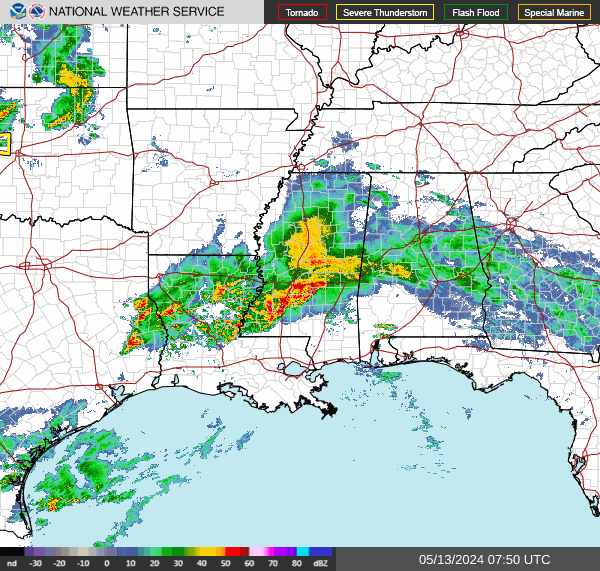
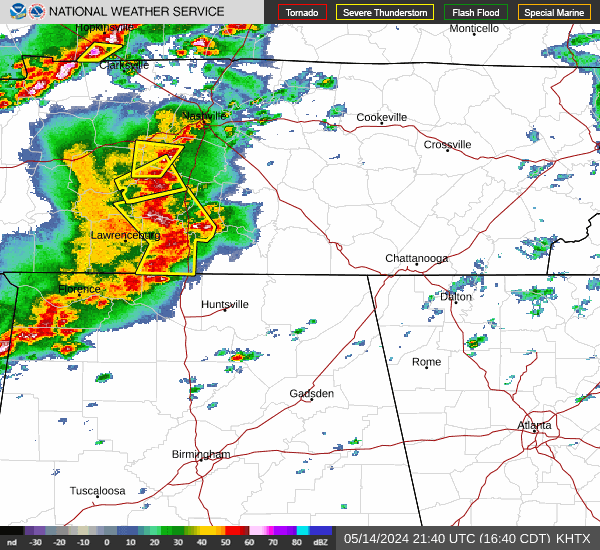




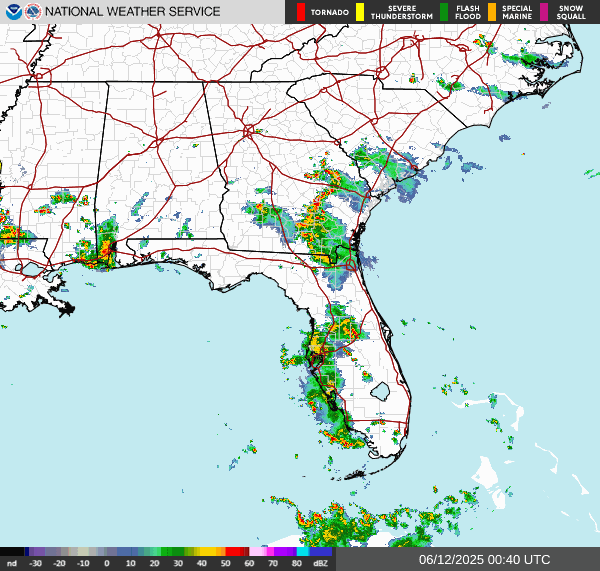
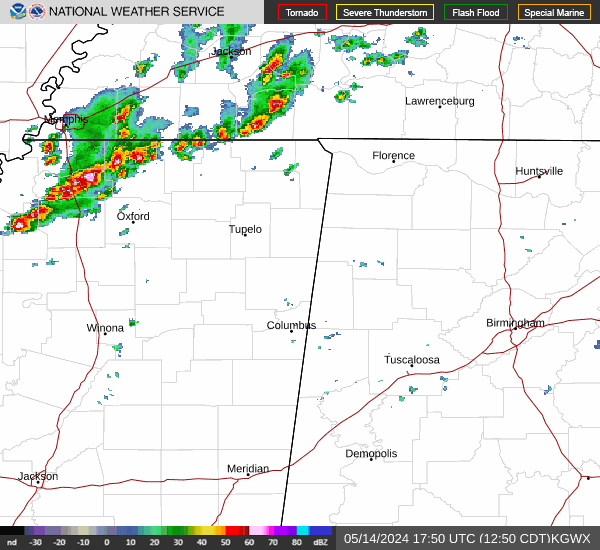
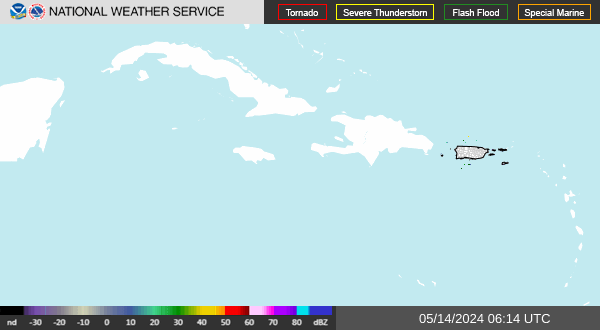




No comments:
Post a Comment